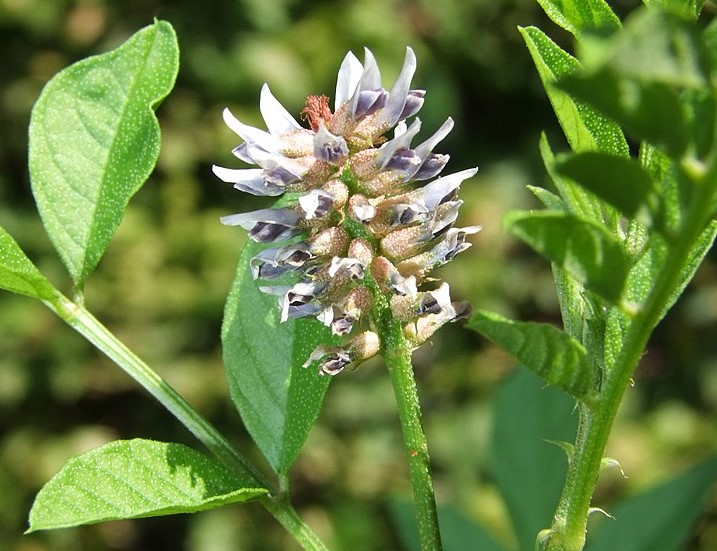Features: The chaga (Inonotus obliquus) also known as the birch mushroom, is famous in North America and Canada for its beauty alone. The mushroom serves its medical purpose by growing on older trees (also on beech and other trees).
This growth is rough, dry, porous, and crusty on the outside and has deeply cut and crooked separations that seem to be composed of dull, charred wood on the inside. The surface is nearly black.
Taking this projection off a tree is like removing an out-of-control wart or undergoing cosmetic surgery. A mature and most desirable Chaga measures 30 to 40 centimeters in diameter, 10 to 15 centimeters in thickness, and will be 4 to 5 feet long. It weighs 4 to 5 pounds.
The layers are as follows:
(1) There is some old bark and perhaps twigs on the outside, which must be cleaned;
(2) The side of the tree trunk that is closest to the trunk must be cut off.
(3) The middle part, granulated and unspoiled, is what should be used.
Any time of the year is suitable for collecting it. As dampness and strong light dissipate the power of Chaga, it should always be kept in a dark place (a dark-covered jar).
USES: The Native Americans were well aware of all plants and how to use them for food, medicine, and poison. We know from Anglo-American literature that many illnesses were treated with tribal knowledge. Although we understand that they used the properties of many fungi, we have not been able to find a definitive record of the identification of Chaga.
Experience: Various sources, including monographs, medical texts, encyclopedias, and popular herbal information, mention the existence of Chaga and its uses. It has long been believed that chaga has magical properties in European Russia and Siberia, where folk medicine gives it almost unlimited credit.
People who have experience and faith in herbal folk medicine have used chaga for a long time. The remedy was used to treat stomach ailments such as gastritis, stomach pain, ulcers, cancer, tuberculosis of the bones, as well as glandular organs where surgery was not possible because of the network of blood vessels. Folk medicine may commend Chaga unreservedly, but science is cautious and reserved.
It gains more credibility with each passing year in the scientific and medical literature. Further research and laboratory and clinical testing have been committed to this plant because of its apparent value. In 1955, the Medical Academy of Science in Moscow began promoting Chaga for clinical and domestic medicine, encouraging its commercial use, and collecting it for medical use. It was published in 1963 in a Moscow atlas of medicinal plants.
It is highly recommended to take Chaga tea, extract, or nastoika for malignancies, but it is not approved. When surgery or radiotherapy is not an option, this treatment is recommended. Old folk medicine has recognized Chaga for stomach ulcers, gastritis, and cancer, as well as tuberculosis and other malignancies resistant to surgery.
Chaga will reduce pain, give comfort, and stop or slow cancer growth, although it cannot control all advanced forms of cancer. There is a possibility of arresting some early and less advanced cases of cancer, and spreading might be prevented. Besides oral medications, Chaga decoctions are prepared for colonics when swelling occurs in the lower bowel.
Dairy products and vegetables are the only foods allowed on the diet, but meat, preserves, sausages, and strong spices are not allowed. The Medical Encyclopedia (Moscow, 1965) reports that Chaga purifies the blood and regenerates damaged organs and glands. To allow Chaga to work, they must be given time. A treatment course of three to five months at intervals of seven to ten days is recommended.
DOMESTIC USE: After carefully separating the bark and middle portion and cleaning them, the bark and middle portion must be crushed or shredded, then soaked in warm water (not over 50° Fahrenheit).
Chaga can be prepared in the same way as yeast; if the water is too hot, the living fungus will be killed. The first batch of crushed chaga should be poured over 5 parts of warm (not boiling) water, left for 48 hours, strained, then poured over more hot (not boiling) water, perhaps twice as much, then consumed in three cups per day before meals.
MEDICINAL PART: The three layers contain granulated parts.
SOLVENTS: alcohol, vodka, boiled water (not boiling).
Body Influence: Anodyne, blood purifier, restorative, tonic
Common names: chaga and birch mushroom.







